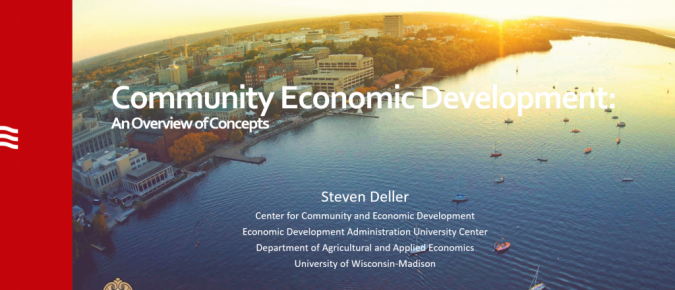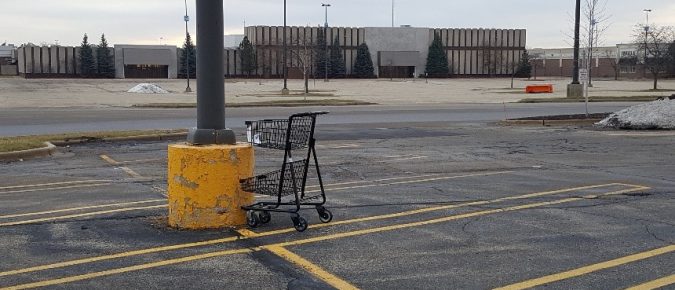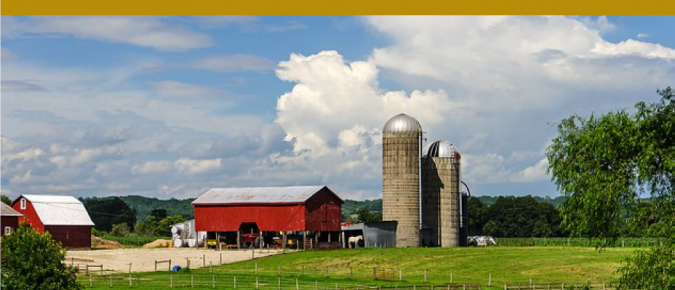Our Work
February 6, 2020 Lunch N Learn: Getting Access to Childcare: Why? How? and Who to Work With?
Summary Tessa Conroy discusses the status of child care in Wisconsin and has several guests discuss the strategies that they have seen or contributed to. These guests include: Jessie Small from Total Administrative Services Corporation (TASC) Courtney Berner from the UW Center for Cooperatives (UWCC) Paula Drew from the Wisconsin Early Childhood Association (WECA) Karl […]
WIndicators Volume 3, Number 1: Student Loan Debt: A Challenge for Wisconsin?
The growth in student debt in the United States has become a cause for concern. At the beginning of 2006, student debt, or loans taken out to pursue higher educational opportunities, was approximately $481 billion. By the beginning of 2019, that amount has grown to nearly $1.6 trillion (Figure 1a). While student loan debt remains smaller than consumer credit debt ($4.1 trillion) or mortgage debt ($15.5 trillion), the rate of growth of student debt is alarming.
January 8, 2020 Lunch N Learn: Wisconsin 2020-Community Economic Development at the Start of a New Decade
Summary Steven Deller discusses Community Development, Economic Development, and Community Economic Development and the differences between them. Webinar Recording Additional Materials What-is-Community-Economic-Development Explore Our Lunch-n-Learn Series
Current Trends in Retail: Looking Ahead to 2020 and Beyond (Issue 189, December 2019)
The US is significantly oversupplied with retail space. We have as much as 10-times the square feet per person as Germany. This has contributed to as many as 10,000 store closures this year. Smaller community malls have been hurt the most. Those that remain open typically operate at a vacancy rate of 10% or more. […]
WIndicators Volume 2, Number 7: Social Capital in Wisconsin
Numerous communities across Wisconsin encourage and support resident participation in local initiatives. These are places with high volunteerism rates where members can undertake constructive conversations about issues facing the community. Newcomers, along with their ideas and input, are welcomed. Sometimes, it is said that these communities have high levels of “social capital”.
The Contributions of Health Care Services to the Wisconsin Economy with a Focus on Hospitals
EXECUTIVE SUMMARY October 2019 — The intent of this study is to update prior analysis documenting the contribution of hospitals to the Wisconsin economy. For this update we use the most recently available data (2016) and expand the analysis to also consider non-hospital related health care sectors. The health care sector remains one of the […]
WIndicators Volume 2, Number 6: Business Expansions in Wisconsin: Part 2
August 2019 — In recent decades, significant resources have been devoted to entrepreneurship, and studies find net annual job creation is positive only for startups (Economic Innovation Group, 2017; Conroy and Deller, 2015). As a result, growth potential of existing firms is sometimes overlooked. Expansions, existing firms adding jobs, create 75% of gross new employment […]
The Contributions of Agriculture to the Wisconsin Economy: An Update for 2017
EXECUTIVE SUMMARY October 2019 — This study provides an update of the Contribution of Agriculture to the Wisconsin Economy undertaken by Deller (2014) using data for 2017, the most current available. Despite currently weak commodity prices, particularly within dairy, agriculture (defined to include on-farm activities, food processing, forestry and horticulture) remains an important part of […]
A Trade Area Analysis of Wisconsin Retail and Service Markets: Updated for 2018
For the updated Trade Area Analysis (TAA) of Wisconsin counties we use the sales tax data as reported by the Wisconsin Department of Revenue for 2017. Only those counties that have elected to collect the optional county sales tax are included in the analysis. Because sales tax data are used one must keep in mind that the analysis focuses only on taxable sales and may not reflect the total level of activity in the county. Using Pull Factors and measures of Surplus and Leakage, the relative strengths and weaknesses of local retail markets are identified. An example of how to explore changes in Pull Factors over time to identify strengths, weaknesses, opportunities and potential threats is also provided.
WIndicators Volume 2, Number 5: The Competitiveness of the Wisconsin Economy
July 2019 — Patterns of uneven economic growth and development across the U.S. have been well established in the popular press and academic literature. Some states, such as Mississippi, Alabama and New Mexico, continue to experience higher rates of poverty, lower rates of worker productivity, and modest income growth. Other states, such as Arizona, Colorado […]
Walkability Means Better Business (Issue 188, July 2019)
(Image Source: Frank Busch / Unsplash) July 2019 — Walkability is a measure of how friendly an area is for walking. Factors influencing walkability include the presence or absence and quality of footpaths, sidewalks, or other pedestrian rights-of-way, traffic and road conditions, land use patterns, building accessibility, distance, and safety. The friendlier a place, the […]
WIndicators Volume 2, Number 4: Business Expansions in Wisconsin
June 2019 — Much attention has been paid to the role of entrepreneurship as a source of job creation in recent years. While this is warranted, expansions of existing businesses are also inseparable from job creation and economic growth. In terms of gross job creation, firm expansions contribute a significantly higher number of jobs than […]
















